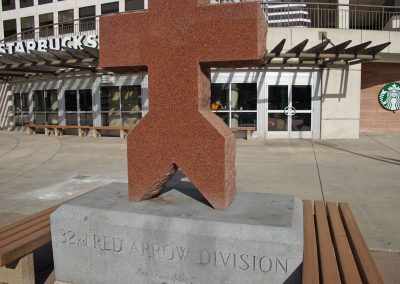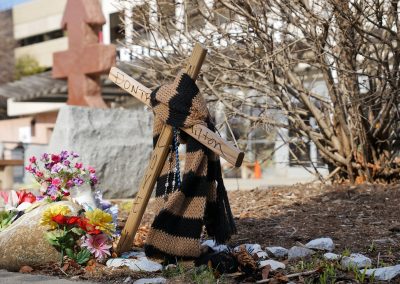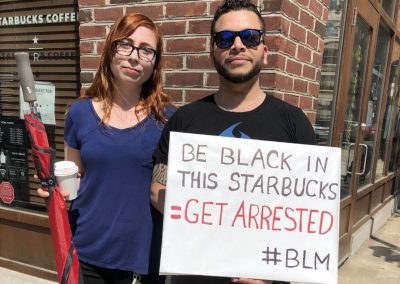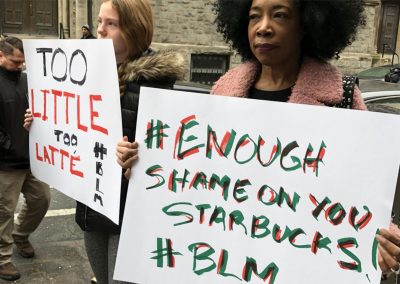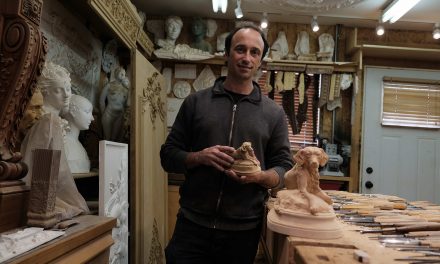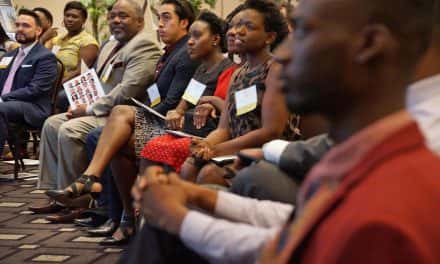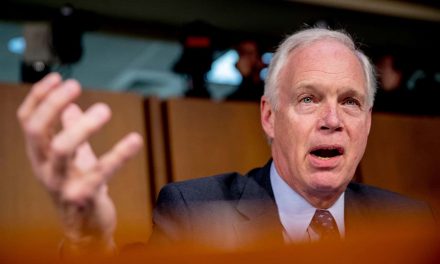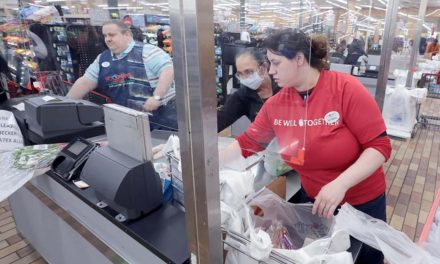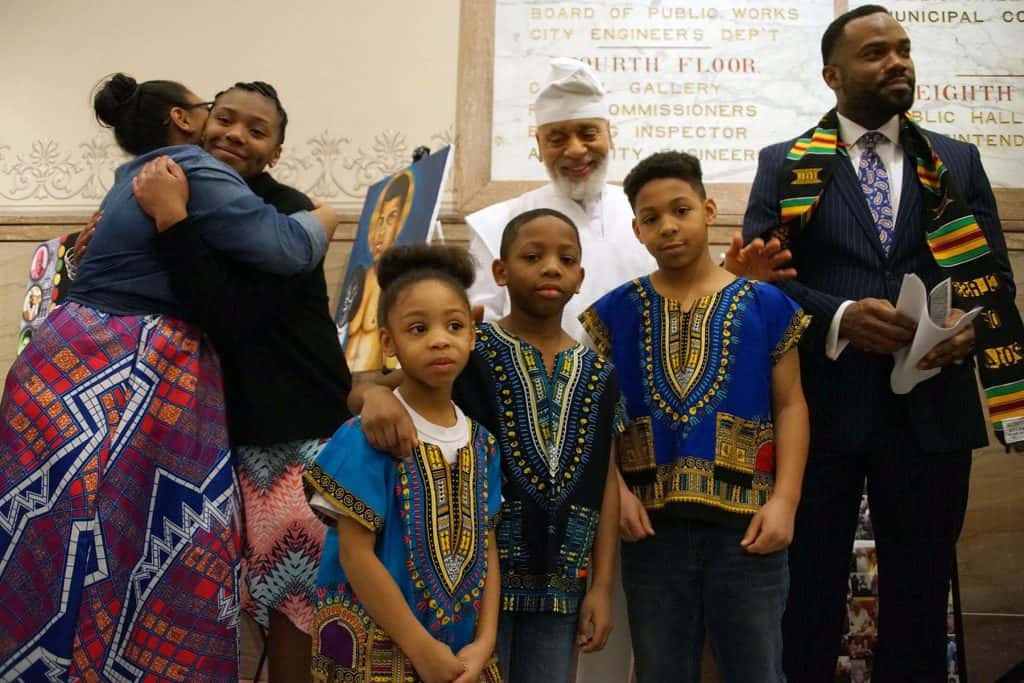
The recent incident at a Philadelphia Starbucks has brought the issue of unconscious bias onto the centerstage of America’s ongoing racial discourse. The CEO of Starbucks, Kevin Johnson, issued an apology to the two black men who were arrested after simply waiting on a friend at Starbucks and refusing to order food or drinks. During his apology Johnson mentioned “training around unconscious bias.” I’m sure he means well, but Starbucks workers have unnecessarily called the police on blacks before.
On April 30, 2014, Starbucks employees in Milwaukee at Red Arrow Park called the police not once but twice because a black man was sleeping on a park bench “outside” of the store.
These two calls led to Dontre Hamilton being shot fourteen times and dying at the hands of a Milwaukee Police officer. The incident in Philadelphia could have very easily escalated into another fatal tragedy. Fortunately, neither of these two men were injured.
A white store manager called 911 because the two black men, who were waiting on a colleague to arrive, asked to use the bathroom and were told it was only for paying customers. They were then told to leave the store.
I have scoured the internet looking at articles about the incident and its aftermath. So far not a single article has mentioned Dontre Hamilton. They all talk about how Starbucks failed in its attempt to start a conversation on racial discrimination by launching a “race together” initiative in 2015.
In fact, most of the articles discussed Starbucks as an advocate of racial inclusion and diversity. I find this disingenuous considering how Starbucks handled the death of Dontre Hamilton. His death was directly related to their employees calling the police a second time, after being told that Hamilton was doing nothing wrong the first time officers arrived.
That incident should have given Starbucks the incentive to train their employees about discriminatory preconceptions regarding the dangerousness of black men. They made promises but did nothing, refusing to even accept some measure of responsibility for Hamilton’s death. The family met with CEO Howard Schultz who apologized to them privately but never publicly did so.
Regarding Philadelphia, the mayor has said the apology for that incident was not enough, yet the police chief defended the actions by law enforcement. As the officers were getting ready to arrest the two black men, their white colleague arrived and told the police officers that the men were simply waiting for him. That should have been the end of the whole episode. A simple misunderstanding should have been understood by all involved. No crime had been committed, according to the district attorney’s office, therefore no charges would have been filed against the two men.
According to reports, the store manager claimed she did not want the men to be arrested. What did she think would happen? Had she paid any attention to the news the past several years? Was it not obvious to anyone that when police become involved, black people are arrested even in the most innocent of situations?
Starbucks reported that the manager no longer works at the location, after several days of protests inside and outside the store. It is not clear if she still works for Starbucks somewhere else.
The manger only had to have a conversation with the men to find out that they were waiting on someone and did not necessarily want any of their products. I have had many meetings at Starbucks and other coffee shops without ordering anything because I am not a coffee drinker, nor do I want to pay $3 for an orange juice.
A person utilizing the space at coffee shops for a meeting is very common. So is using the bathroom without first making a purchase. But reports have indicated that the Philadelphia police were called after only two minutes – 120 seconds – of arriving at Starbucks. Would the same have been done if the two people were white?
That is the question at the heart of this whole situation. Was it simply unconscious bias or outright racial discrimination? It is very easy to say it is unconscious bias because people do not need to describe the motivation for their actions. There was no logical reason that these two men were singled out and asked to leave while others were not.
For the CEO of Starbucks to throw out the “unconscious bias” excuse is becoming tiresome. Just as police officers who shoot unarmed black men, women, and children, conveniently all use the “I was afraid” excuse. There is a noticeable pattern to all this.
There are certainly incidents where unconscious stereotypes towards people of color lead to discriminatory behavior. That is what unconscious bias is. However, it appears that American society has begun to accept that conscious bias no longer exists.
These two men were, from all witness accounts, not acting in a threatening way at all. They were calm and cooperative with the police while being arrested. They were asked to leave by the officers but knew that there was no plausible reason that they should have to. They had done nothing wrong prior to the store manager calling 911.
The desire to call 911 because two black men were refusing to buy overpriced coffee would only occur on a conscious level. Just as the Starbucks employees at Red Arrow Park called 911 twice because a black man was sleeping on a bench in a public park, this store manager made a conscious decision that these black men were enough of a threat to warrant calling an emergency dispatcher.
There was nothing unconscious about that decision. We cannot keep using the same excuses and dismiss these kind of racially motivated incidents. They are not isolated or unintentional simply because classifying them as such is easier to excuse. An unconscious reflex does not absolve individual or collective responsibility.
Believing that intentional racial bias and discrimination are a thing of the past is a self-deception. The response by the CEO to not reprimand the manager speaks a great deal. He tried to take responsibility for the incident in an attempt to shield the actions of the store manager. That is a public relations stunt and the public should not fall for the trick. Someone needs to be held responsible for these two men spending eight hours in police custody.
As a community, we need to come to terms with the cost of continuing to ignore blatant and racially discriminatory behavior, like that displayed by the white store manager and outright insensitivity by the officers on the scene. Starbucks must address a history of incidents, going back to the Dontre Hamilton case, and recognize that they need more than just a few hours of “training.” They must make their deeds match their words.
Racial diversity and inclusion is not achieved by talking about it in the absence of tangible activity. Starbucks once again has a chance to set a precedent in affecting social change, and once again they are failing. Closing their stores for training is not enough to affect institutional behavior.
As is so often the case, white society is afraid of confronting racial bias. It feels so much more comfortable to claim unconscious bias, since the courage has been lost to call racism what it is. It is preferred to use coded language instead. When someone utters a racial epithet, the media presents it a “racially charged” statement instead of calling it what it is.
There is no doubt that unconscious bias is real, we favor or reject people by their looks all the time. In fact, the advertising and marketing industries have spent generations training Americans to classify ourselves and others by this standard. And I educate people about this condition on a regular basis.
My fear is that we will continue to excuse racism by using sugar-coated code words. The clearly racist use of Native Americans as sports logos is now called “racially insensitive.” This issue has been brought to the attention of the nation as racist depictions for decades now, yet many people still remain oblivious to why this causes hurt. What those people do not understand is that people of colors are tired of the social acceptance of these racists things. They have been used for so long and are so imbedded into the psyche of America that to correct the long-standing mistakes is uncomfortable to those with white privilege. They feel threatened by racial equality,express bitterness at being “PC,” and criticize reactions as being “overly sensitive.”
This part of society blames the victim for complaining about their victimization, and the complicity of others reinforces the habit. Even talking about being mistreated is labeled derisively as “playing victim,” designed to make people of color feel guilty for succumbing to their victimization – as if it was their responsibility for creating the conditions.
Our country needs to recognize that people have every right to speak to their mistreatment. The Declaration of Independence was the English colonists way of complaining about their victimhood, yet no one would think to criticize them for “playing victim.” Yet today, those who express legitimate concern about not being treated fairly are dismissed or must defend themselves twice. First they have to articulate the mistreatment, and once they do that it is now almost mandatory that they have to defend themselves for speaking out against the mistreatment.
Not so long ago, people of color had no voice to discuss their displeasure with racism openly. We had no platform to demand that society stop using racial epithets and caricatures of people of color. Depictions of animal-like, blacks, Asians, and Native Americans were commonplace around the country. They existed in old Bugs Bunny cartoons, in movies and on television for generations growing up under mass media.
These depictions buttressed the antagonistic laws and policies which prevented people of color from having equal access to public spaces. These were not unconscious efforts. They were blatantly racist and unfair, and were the law of the land. They clearly had consciously racist intent. Now we want to pretend that somehow this incident at Starbucks is different. Even the white customers in the viral videos of the incident can clearly be heard expressing that what took place was wrong and discriminatory.
If we are to overcome racism, we must overcome the fear of calling out racism when we see it. Covering up the harsh reality of conscious racism by using unconscious bias as an excuse perpetuates the problem. Creative euphemisms have become a method for pretending that conscious bias is dying. The events in Charlottesville and Charleston teach us otherwise. This is not meant to dismiss the fact of unconscious bias. Obviously that is a fact of human behavior. But automatically assigning actions to the category of unconscious bias, without even exploring the possibility that it could be something else, is dangerous by fostering space for social injustice.
Overt acts of racism have grown more widespread under the current political climate. Our President has refused to speak out about racism. He even went so far as to defend rabid racists in Charlottesville. He said, “you have some very bad people in that group. But you also had people that were very fine people, on both sides.” This was after one of them plowed through a crowd with his car injuring dozens and eventually killing 32-year-old Heather Heyer.
America has moved backwards, which was perhaps the intent of “Making America Great Again.” That statement conjures images from the Jim Crow era where white society ruled without questions. As a nation, we are on a path opposite of everything we claim to stand for.
I expend a great deal of time and effort teaching about the difficult race relations we have as a country. One of my core beliefs is that we cannot pretend our way out of this situation. We must address it openly and honestly. The learning of how unconscious bias works is certainly a method of understanding how we are still impacted by racism. However, it is not a tool that will protect future black customers, who are racially profiled and discriminated against, simply because of their “otherness.’
Conscious racial bias, as a fundamental feature of the lived experiences for people of color, is a daily reality. To dismiss the idea that it exists is to willfully ignore the racist conditions that grip our culture.

